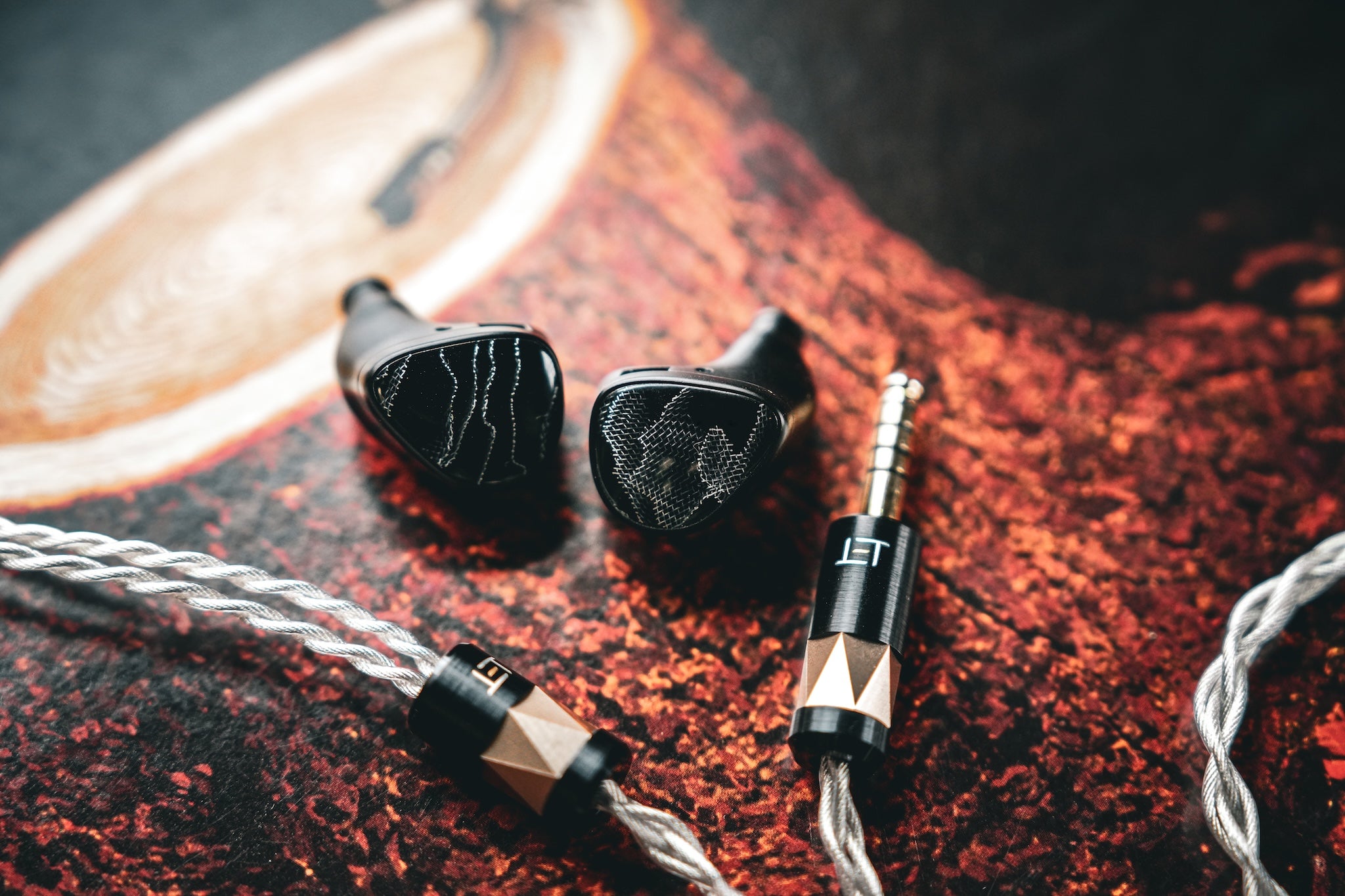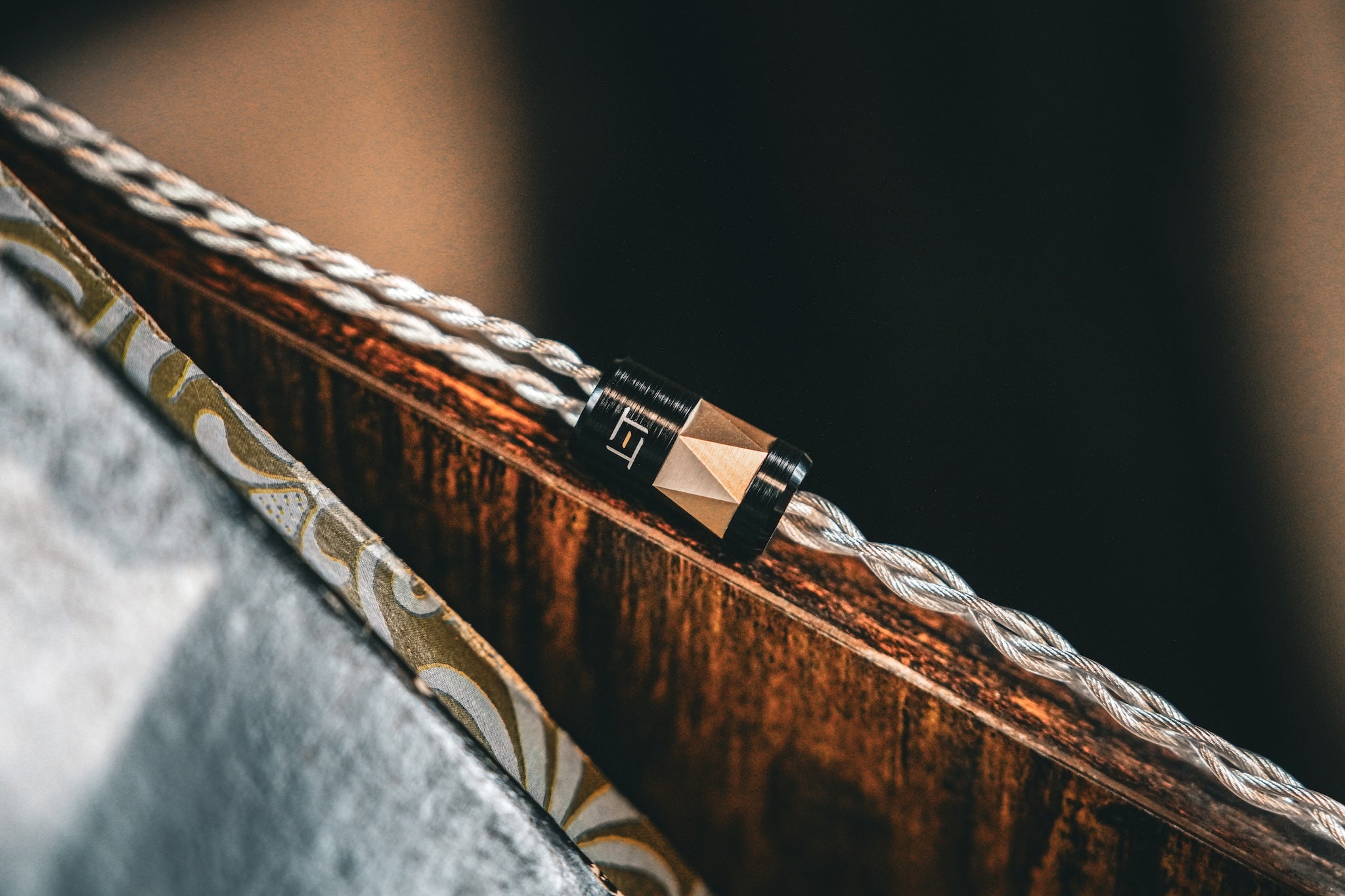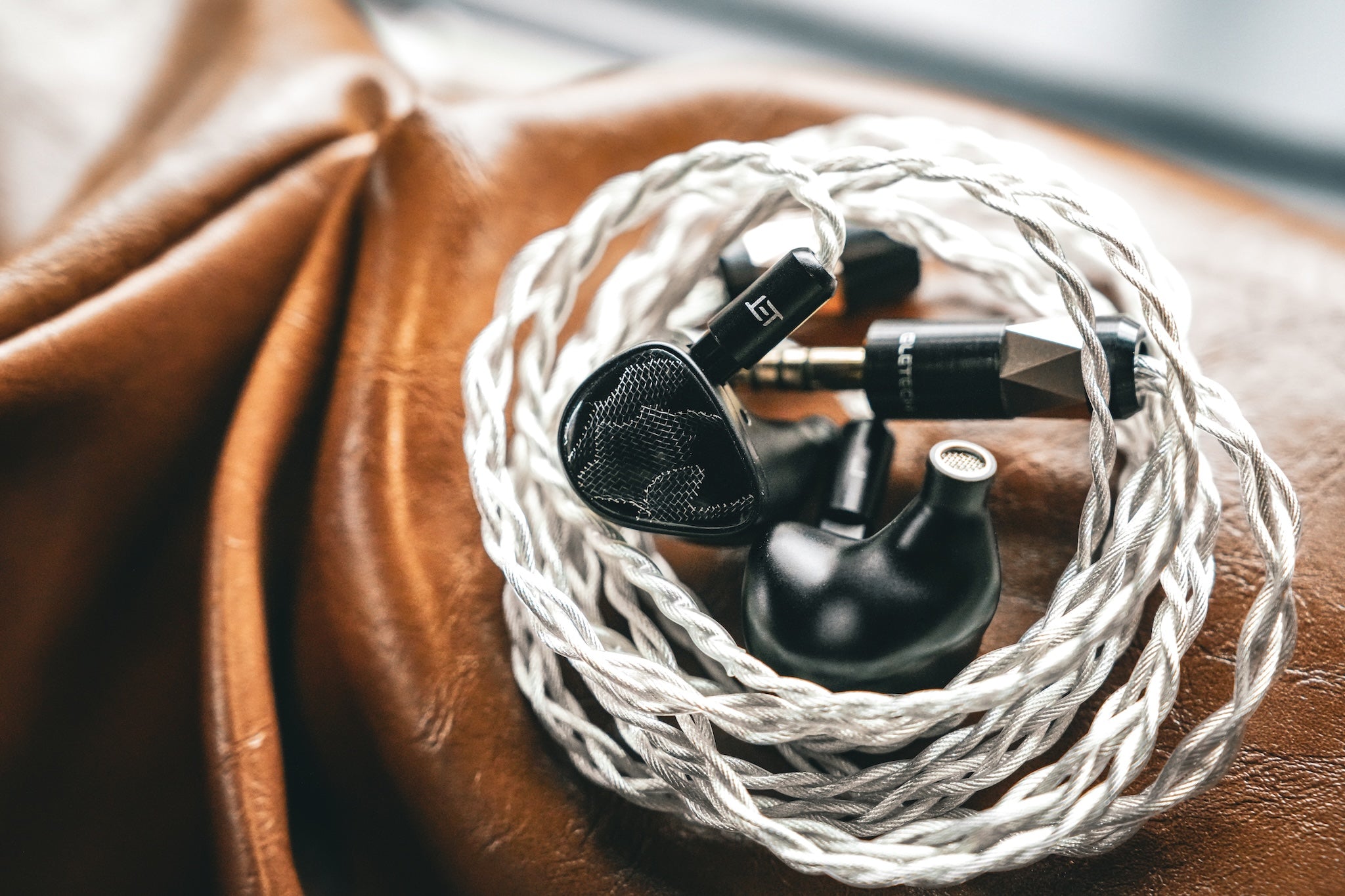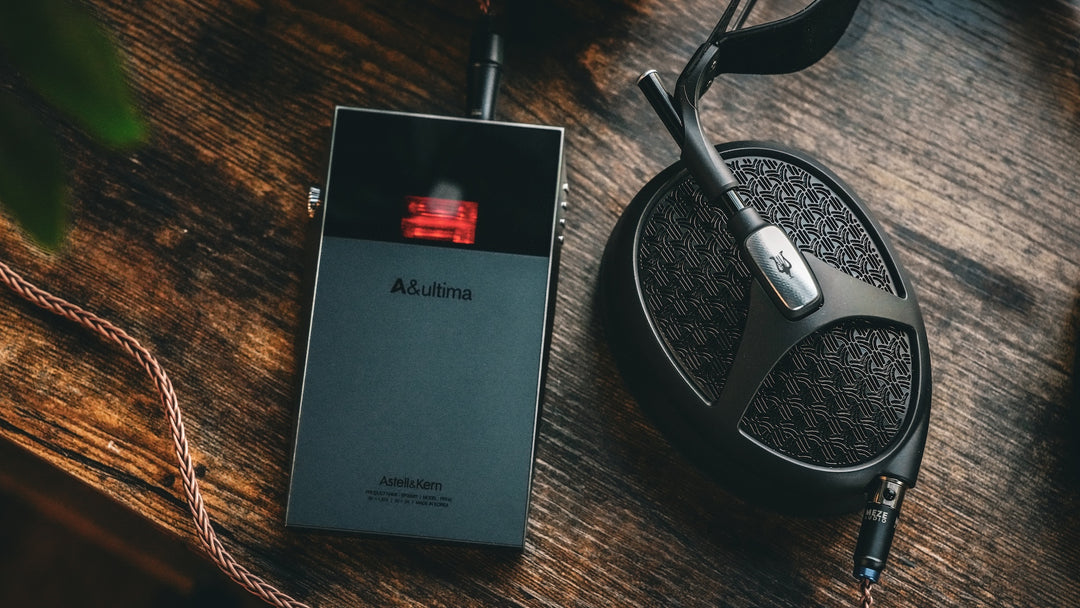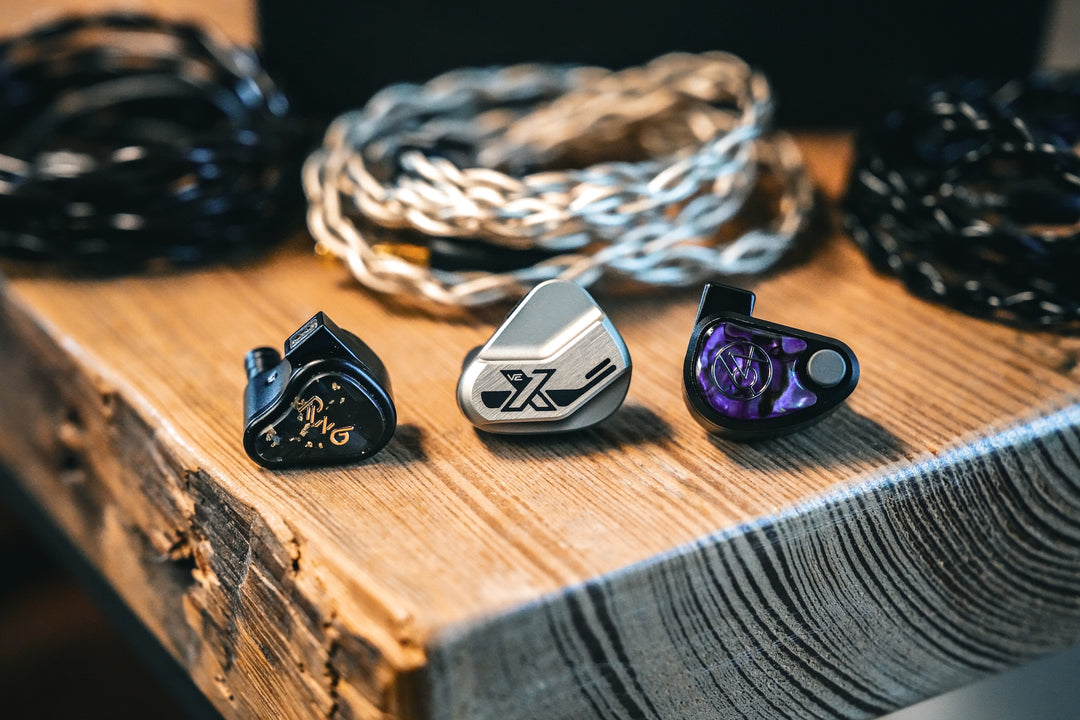While an onyx stone can be many colors, it is best known for its deep black coloring which evokes a cold darkness. Noble Onyx borrows from that motif for the design of their latest IEM. While it certainly looks the part of an onyx stone, does Noble Onyx’s sound evoke the sort of darkness its name implies?
Build and Design
The IEM's shell is made from a CNC milled aluminum and the faceplate is made from Raffir, which matches the look of black onyx, and features a slightly different contour and grain for each Onyx unit. Materials and build quality are one of the things that set Noble apart from other brands at the flagship level.
Onyx is an eight driver quadbrid featuring a single dynamic driver, four balanced armatures, two EST drivers, and a bone conduction driver. In terms of fit, Onyx isn’t quite as massive as some of Noble’s larger offerings, like Ronin or Viking Ragnar, but it isn’t small either. The shell size, nozzle size, and insertion are comparable to the Thieaudio Monarch MK3.
Noble Onyx’s package is similar to Noble’s other high end IEMs, with a case and plenty of tips, but this time they’ve sweetened the deal with a unique Eletech Courage silver-plated copper cable. The cable matches the general quality in build and materials of Eletech’s Virtues line, which extends up to $500, making the cable a nice addition to the package. Does the design, technology, and everything else come together to create a real “total package” of an IEM?
Sound
Probably the first thing you’ll notice about Onyx is the feeling of width and spaciousness in the soundstage. The overall tonal balance is shifted slightly towards the bass, offering a deep, weighty sound which is balanced out by crisp treble and strong vocal presence. There is a bit of darkness to the otherwise natural timbre that helps Onyx live up to its name.
Onyx’s bass is slightly elevated in the midbass with a stronger presence in the subbass. While the bass impact is good, the depth and texture is the highlight in the low end. The strong bass leads up to a slightly hollow feeling in the low mids, but otherwise strong detail in the midrange. Vocals are another highlight, with excellent vocal imaging, and a balance that allows for a more forward vocal presentation that doesn’t border into “shouty” territory.
The treble has strong fundamentals and is slightly smooth at the top. The combination of subbass emphasis and nonfatiguing treble give Onyx a relaxed, nofatiguing presentation. Despite feeling relaxed Onyx presents strong technical characteristics and resolution that can almost feel paradoxical to the otherwise smooth delivery.
If Onyx asks you to come for the bass and vocals, you’ll want to stay for the soundstage and imaging. Onyx presents an expansive soundstage with strong separation and great three dimensionality in the imaging. The vocal imaging is a standout, but you’ll find the instruments set carefully around the massive stage, each cleanly separated from the rest.
Onyx’s tuning can leave it susceptible to poor synergy with some sources. I found that warmer sounding DAPs like the Astell&Kern SR35 could leave it somewhat muddy, while it performed much better with players with cleaner reference sound and more technical emphasis like the iBasso DX260 or Astell&Kern SE300.
On Miles Davis Quintent “Four,” you can practically feel the vibration of the muted trumpet, while a deep, round sound of the upright bass adds punctuation to the piano rhythm. While the recording itself doesn’t provide much imaging information, the instruments remain clearly separated and nicely layered. As the bass shifts from the percussive low notes to more articulate playing you maintain the sense of pluck without the impact of the low notes. The extra emphasis on deepest bass notes overshadow the piano a bit, but the lead trumpet remains clearly soars above the rest of the band.
One genre where I found Onyx excelled was heavy metal, as exemplified by “...And Justice for All” by Metallica. The guitars have an excellent feeling of crunch and there’s a great sense of cohesion where the guitar and bass line up with the drum, offering powerful hits across nearly the full range of the frequency spectrum. The vocals are clear, but not so forward that James Hettfield’s shouted vocals become fatiguing. Overall the combination of strong articulation, nonfatiguing upper ranges, and the thickness and weight of the low end make Onyx a great pick for hard rock and metal – genres often neglected in audiophile tunings.
“Adventure of a Lifetime” by Coldpay gives Onyx something with a denser modern studio production to chew on, and Onyx doesn’t disappoint, providing clear separation of each layer with multiple percussion, synth, and vocal tracks to untangle. Chris Martin is right in your face, with the bass driving a hard impact down the middle and the rest of the instruments spread around the stage. Some of the more high pitched elements of this song also make a strong fatigue test, and Onyx gets an A+ for keeping the detail while rolling off the most potentially painful parts.
Comparison: Vision Ears VE10
The Vision Ears VE10 ha become one of our favorites as an “desert island IEM” – something that has a great tuning and is highly versatile – playing almost every genre well. Onyx strikes me as something different though: an IEM that takes some risks and ends up sacrificing some desert island potential for stronger performance in more specific ways.
In terms of the physical design of the IEMs, VE10 also features an aluminum shell, but it doesn’t feel as sturdy, nor does the faceplate have the same sort of classy, jewelry-like look of Onyx. Fitwise though, VE10 is smaller, lighter, and has a slightly easier fit than Onyx.
In terms of the sound, you’ll immediately note VE10’s stronger, fuller midrange and more extended treble. There’s some give and take with that detail and extension, as VE10 can put vocals too forward or hit some harsh notes from time to time, while Onyx avoids that with its more relaxed tuning. VE10 also fills in the space around the listener a bit more, rather than leaving the wide open expanse of Onyx. If Onyx puts you in an amphitheater, VE10 puts you in the studio.
Between the two, I found VE10 to be better suited for classical music, jazz, and a lot of classic rock. Onyx’s midrange was great with hard rock and classic metal, but more acoustic recordings or going back into the “oldies” range of the 50s and early 60s, it felt like something was missing. With most pop, rock, and jazz recordings from the 80s on up, VE10 and Onyx were more evenly matched, with the difference coming more down to whether you wanted to lean back in your chair in Onyx’s expanse, or get on the edge of your seat with VE10’s more immediate delivery.
FInal Thoughts
There are generally two types of people looking at multi-kilobuck IEMs: the person who wants their one-and-only ultimate endgame, and the person who is building a collection of world class IEMs and seeking more sonic flavors and colors to add to their collection. While Onyx wouldn’t be my top recommendation as a single endgame IEM, its unique sound coupled with it's jewelry like build make it stand out in a sea of flagship IEMs that seem to simply dance around the Harman Target while rearranging the drivers to get something just a touch different.


